Reporting From Armory Week 2025
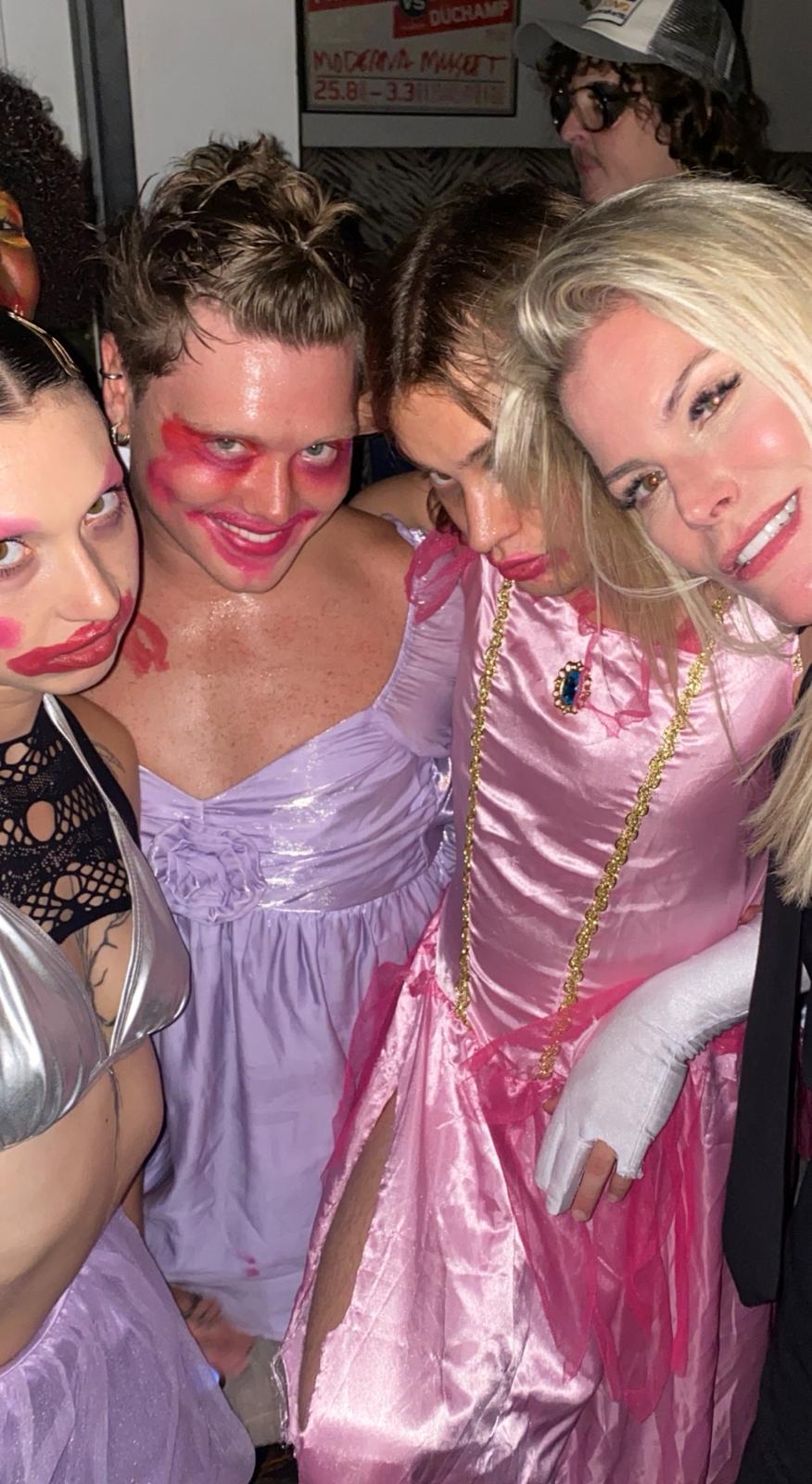
Oceana Andries, Tsipi Ben-Haim, Colleen Dalusong, Vinh Phu Pham, Carson Woś, and Anna Mikaela Ekstrand share their thoughts from New York’s fall season art fair week.

THE BEST PARTY
Starting off with the most important—the best party—bedazzled Labubu dolls, sinister plushies, dollcore gallery staff, and a dance floor. “How do we get in? There is a line around the corner,” a magazine editor called me to ask. Spielzeug’s vernissage-slash-party for Toys! Toys! Toys! Was lit opening Armory Week with pop culturally grounded art jargon-ridden visceral debauchery. If Jeffrey Deitch is Barbie, gallerist Evan Karas is Skipper, or his Gen Z clone. Not only does Karas throw a hell of a party, he also has an incredible eye for finding artists who meld sex, pop culture, and existential themes in well-crafted but weird, hard-hitting works. Julie Béna’s stuffed creatures Ouin…, ouin Gala and Antigone (2021) look like they came right out of Hieronymous Bosch’s hellscape. Ryker Paulson resurfaces the Balenciaga BDSM scandal with Balenciaga Bondage Bear (2025), a teddy belted to a canvas; innocently begging the question, was it all that bad? Do small children really know that leather straps, belts, and metallic hardware can be visual markers for that type of consensual dominant and submissive exchanges? As adults, we are socially corrupt (or enlightened) and cannot replicate or unearth, or recapture that precious innocence that children have. But we can try to simulate it.
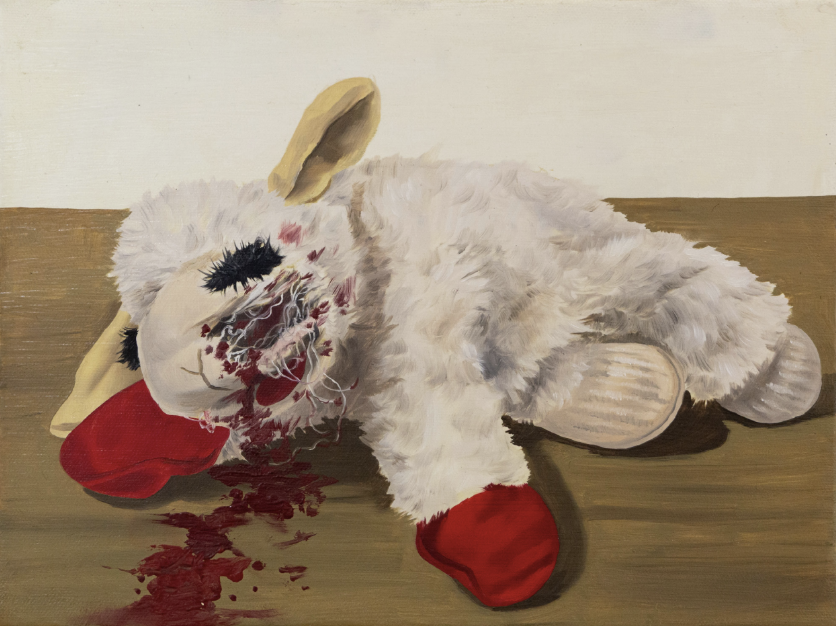
Amy Ireland, the co-writer of Cute Accelerationism (2024) proposes that, unlike in Terminator, where the future has sent robots, nefarious technology, to hunt us down and kill us, dollification has reached us, andits just as bad, if not worse—“it’s already inside us, turning us into cute objects as we tumble inexorably toward the great asymptotic kitten outside history.” Works like Amanda Ba’s oil painting Bloody Lamb Chop, 2-4 (2025), the beloved sock puppet, on the floor, and Chloe Walker’s life-size blonde hair, augmented tits-out sculpture of a female Satyr speak to this cute objectification. The sock puppet is dead; the lamb is slaughtered. Instead, we become dolls and kittens through make-up tutorials and cosmetic surgery or phone filters—the real danger of technology is being consumed and fully embodied by this cuteness, not AI shutting down our infrastructure. Think Rachel Maclean’s 2018 extraordinary film Make Me Up. Not incels on Reddit, Ireland explains. The pièce de résistance in the show is Rosie Gibbens’ The New Me (2022), which repurposes motions and elements from what one might see during a doom scroll session (rife with cuteness) juxtaposing them into a sleek and minimal three-channel video: kind of lipstick tutorial, ASMR dog massage, workout tutorial, and pornography. The high production quality and simplicity reminded me of Ed Atkins. Mesmerizing, then, upon realization that you are watching it for the third time, quite terrifying.
-Anna Mikaela Ekstrand
AT THE ARMORY SHOW
Carceral Hues: Russell Craig at Clubhouse Gallery
Booth 313
Perhaps one of the most compelling booths at this year’s fair came not from the usual blue-chip suspects, but from a voice shaped by carceral experience. Presented by Clubhouse Gallery, Russell Craig—a graduate of Bard’s Microcollege at Brooklyn Public Library—has long been outspoken about criminal justice reform, with work previously featured in Marking Time: Art in the Age of Mass Incarceration at MoMA PS1 and now in the permanent collection of the Brooklyn Museum.
The works circle around the Central Park jogger case—later known as the Central Park Five—where five Black and Latino teenagers were falsely accused, convicted, and decades later exonerated. Craig reanimates the failures of that system not through didacticism but through the stubborn materiality of lived life: woven chip bags, leather, fake U.S. dollars. Materials coded as disposable or counterfeit become the fabric of new scenes—moments of joy, labor, and endurance.
At the center stood the imposing teal doors, numbered 0001 to 0005 (2025), recalling the oxidized iron of prison corridors. Locked but not mute, they compel eye contact through their narrow openings—a gaze of confinement returned. Nearby, woven surfaces pixelate memory, their roughness paradoxically soothing, as if only by tracing the system’s jagged edges can one begin to imagine them worn smooth.

The Prison Windows (2025), numbered 1-5, were quieter but no less arresting. Painted sky-blue on their interior-facing side, flecked with clouds, they offered a fragile proposition: that freedom lies elsewhere, glimpsed but not attained. The choice to center a single artist can sometimes flatten a booth, but here it sharpened the gallery’s voice and clarified its commitment.
Craig, who endured solitary confinement himself, folds that history into forms that carry both weight and breath. Contrasting hues—carceral teal against celestial blue and orange, counterfeit green against lived brown—mark a practice at once grounded and transcendent. More than enjoyable, the booth was proof that risk, when tethered to vision, can resonate deeply.
-Vinh Phu Pham
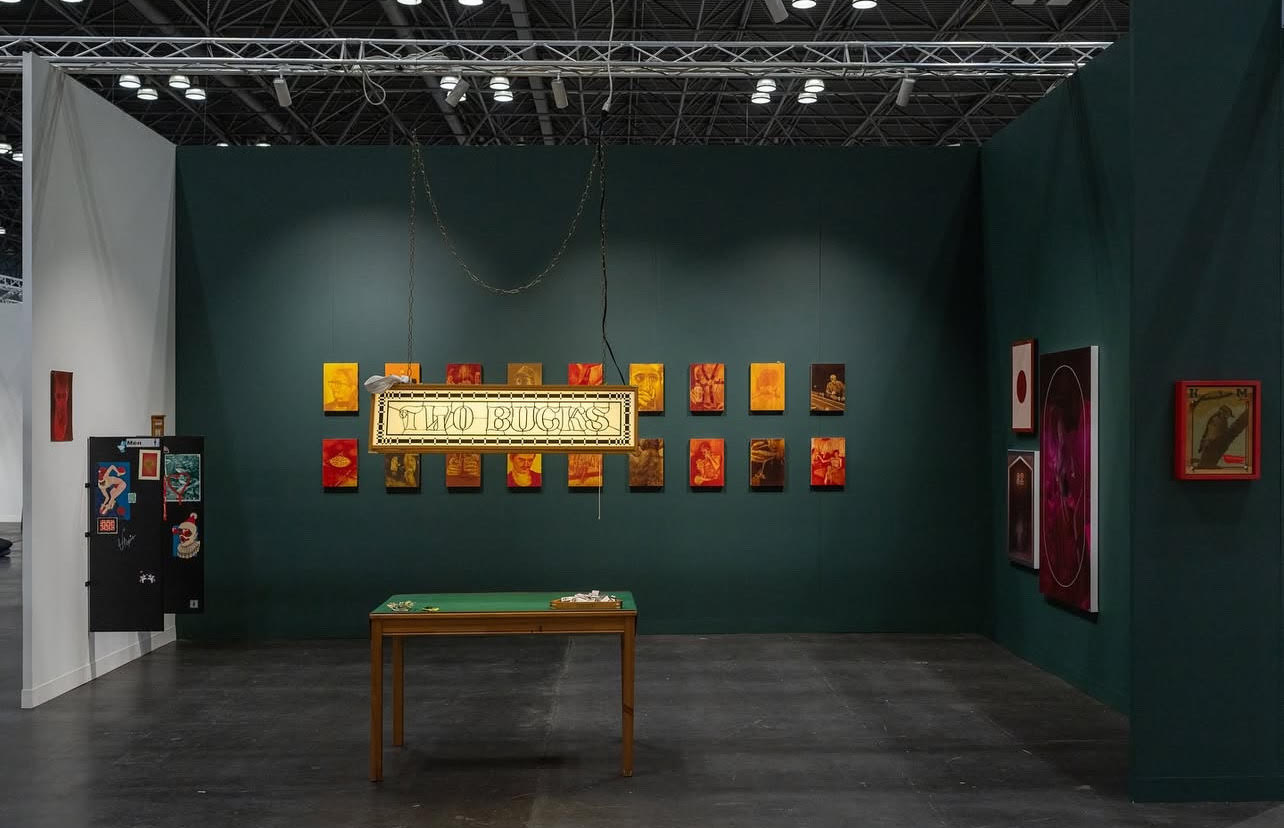
Two Bucks: Robert Martin at EDJI Gallery
Booth P34
In a seemingly never-ending maze of white cubes, it’s a relief and a pleasure to see a booth that stands out from the crowd. Brussels-based EDJI Gallery and artist Robert Martin’s meticulous attention to detail creates an incredibly immersive experience; you can imagine yourself shuffling through a haze of cigarette smoke amid the raucous laughter of leather-clad bar patrons who frequent Martin’s fictitious dive bar, “Two Bucks.” The exhibit is inspired by Martin’s late uncle Marti, a queer journalist from Wisconsin who passed away in the 1990s during the HIV/AIDS crisis. While coastal cities such as San Francisco and New York gained notoriety for their thriving queer communities, Martin seeks to pay tribute to the forgotten queer spaces of the Midwest, and the people who frequented them. Martin’s vignettes lovingly portray glimpses of the men you could meet at a dive bar such as Two Bucks, bathed in the warm golden bar bulbs and neon red lights as they embrace one another, share inside jokes, and take sips from a coupe glass. There is a sense of humor in this exhibit as well, from the double entendre of the name “Two Bucks” to the recreated urinal stall complete with an assortment of stickers, scrawled messages, crude drawings, and (in the absence of an actual urinal) a painting of a dark red hole with the word “GLORY” painted above it. All that’s missing is the scent of piss and spilled Miller Lites.
-Colleen Dalusong
Wild Nature: Marlon Portales at Spinello Projects
Booth 129
Wild Nature looks like torn pages from a folktale, and evokes questions surrounding individuality; an impressionist-esque fairy tale through expressive brushstrokes and fantastical protagonists. Marlon Portales’ distinct style caught my attention from across the aisle. Throughout the booth, viewers are confronted with scenes that bend societal expectations.
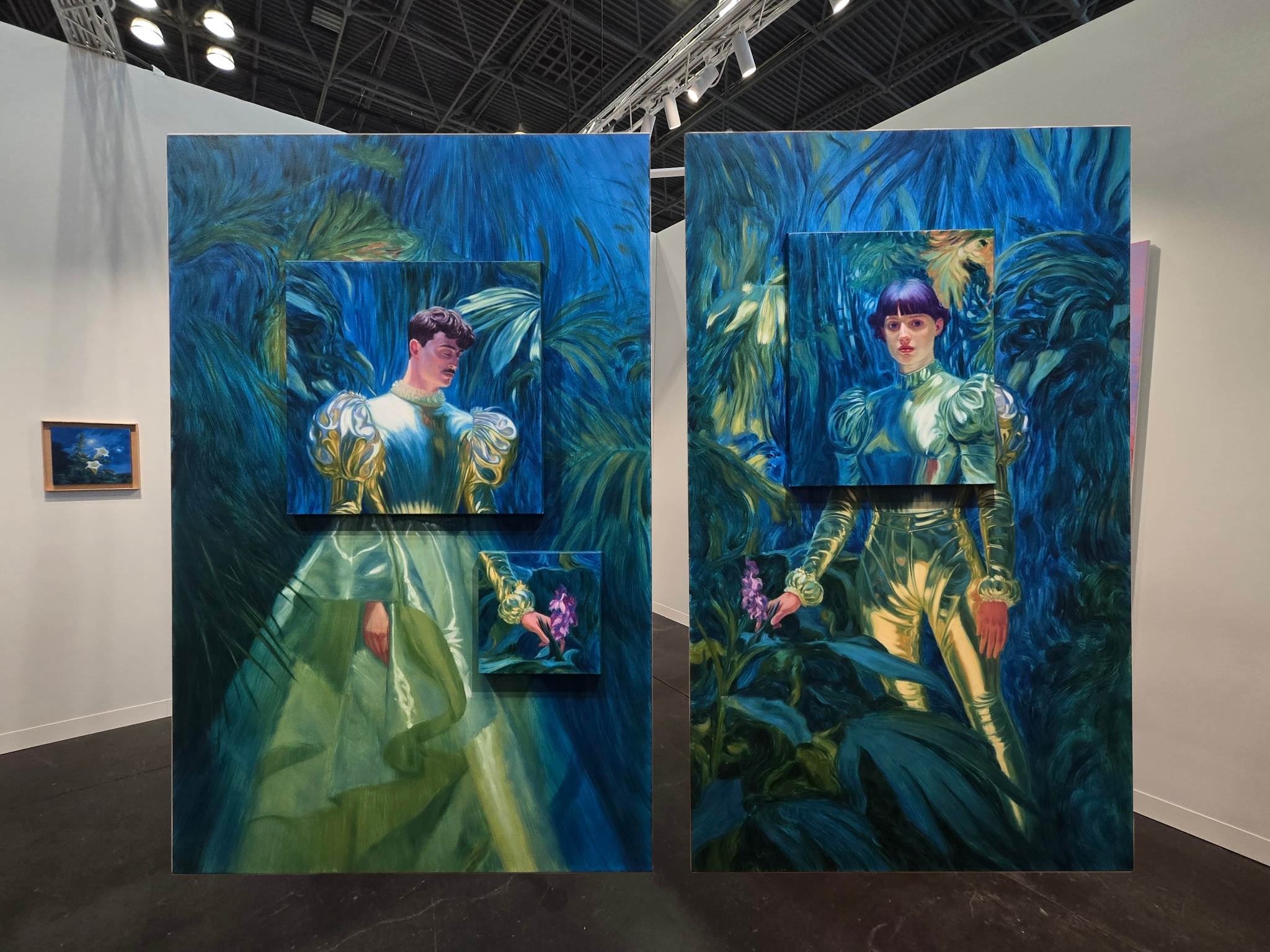
Such as within Noturno III and II, 2025, Portales creates two dimensions through layered canvases. The first layer creates an environment through deep blues and greens, and although these colors typically elicit a somber mood, the background is lively and theatrical, with a play of light and movement. While the second layer subverts expectations and establishes a ‘gender-bent’ version of the roles being portrayed by adding a canvas atop the face of the subject. The knight becomes the princess, and vice versa; the act highlights the interchangeability of these assigned gender roles. I wonder if the image underneath the second layer more closely adheres to societal expectations, or if there’s nothing.
-Oceana Andries
Nikita Gale at 56 Henry, Emma Safir at Hesse Flatow, and Nathalia Edenmont and Jason Martin at Wetterling
Booth D05, P43, and 304
“Wait, I want to see this,” I grabbed my friend to stand in front of…a fence?: Nikita Gale’s INCEPTOR at 56 Henry created a tension between something industrial, utilitarian, and tangled, nearly painterly, not whimsical, but not really menacing either. A reference to 19th-century barricade design—first designed to protect French Revolutionaries, now, however, this type of infrastructure is used to keep people out, or contained. My mind goes to walking on gravel and the metallic rattle of pushing against, squeezing through, or climbing over these flimsy structures to get to a festival, a deserted building, or to take a peek into an active building site. The subtle sounds of reclaiming, or moving freely, in the outdoors.
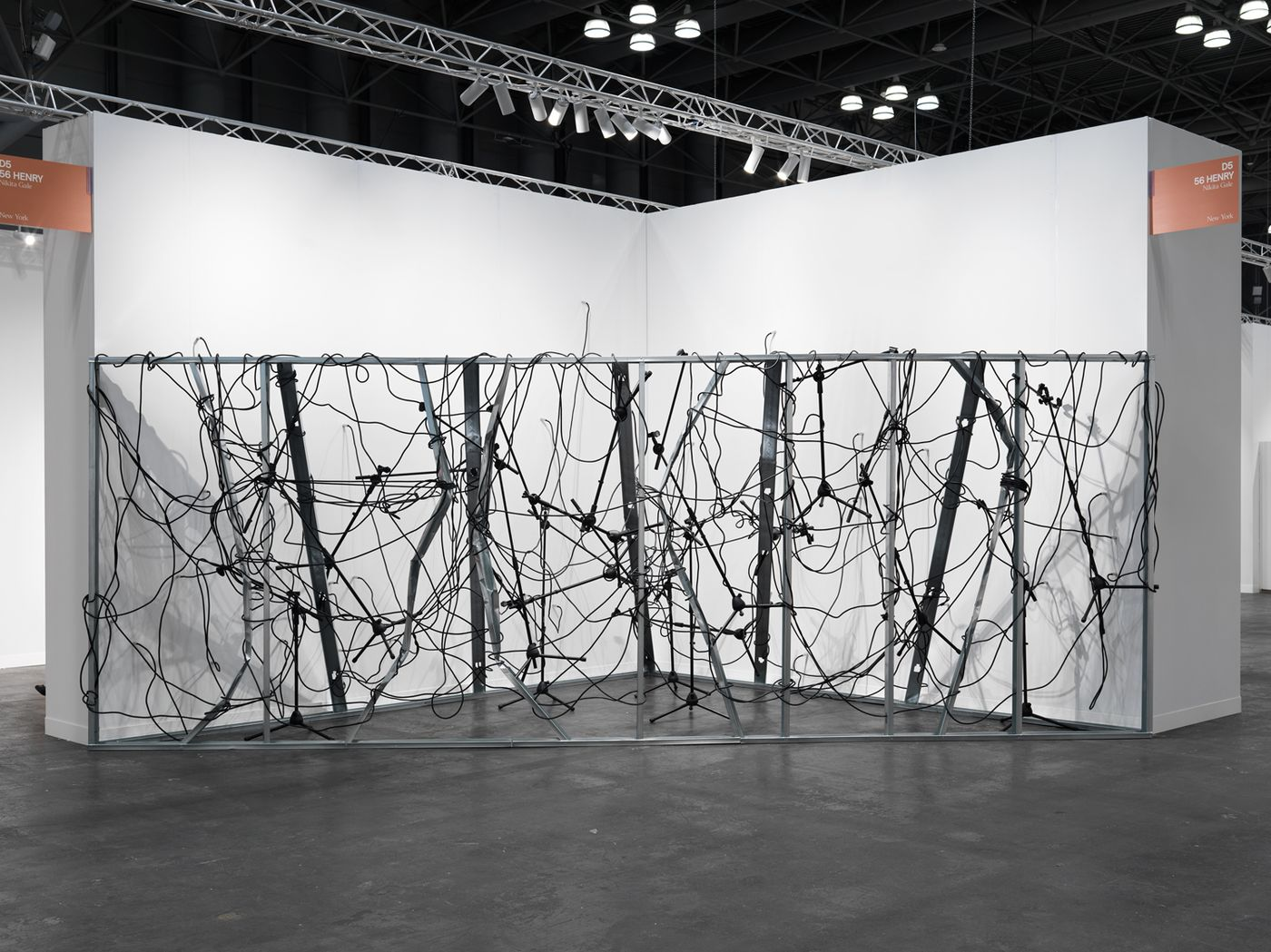
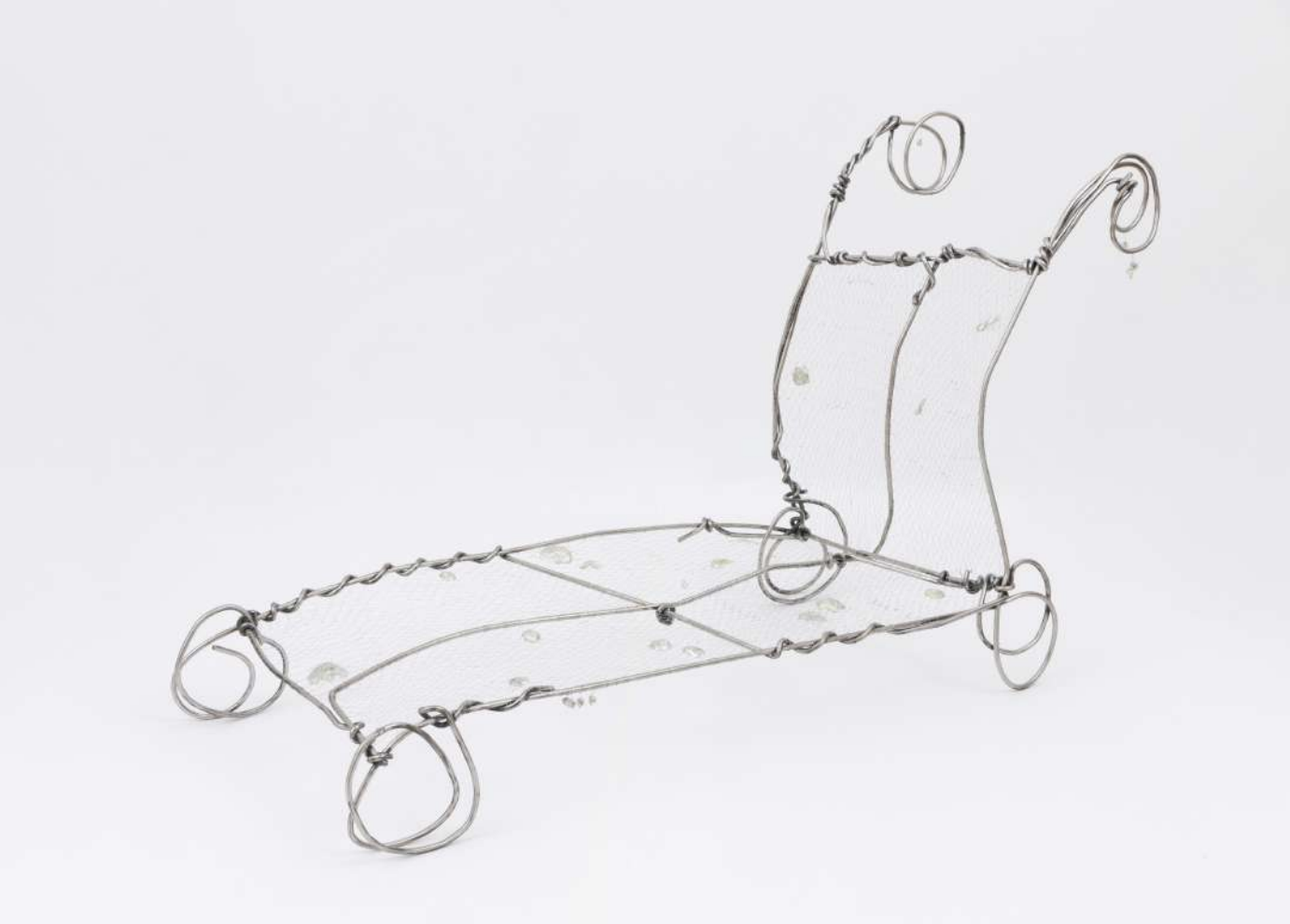
Moving inside, but eliciting an equally visceral response is the work of Emma Safir at Hesse Flatow, who repurposes forms from the boudoir, a private domestic sphere. Something is missing from this metal chaise longue. Trumeau: Mauve reflects a subtle pink hue onto the wall. In a dialogue, shells recur; protective and rough on the outside, smooth on the inside. Safir’s solo show extends to Tribeca, where a gorgeous screen is installed. Various layers of interiority linked to the feminine experience come to mind, yet the metallic hues and hard materials are not, using the 2024 buzzword demure, but rather bold and powerful; they cut through the noise. A moment in Wetterling Gallery’s booth took my breath away, a Jason Martin flanked by marble sculpture eggs and eggs prints by Nathalia Edenmont—filmic and shrine-like. Edenmont’s show of power and destruction of fertility is enhanced by Martin’s virtuoso paintstrokes. Something for A Clockwork Orange reboot.
-Anna Mikaela Ekstrand
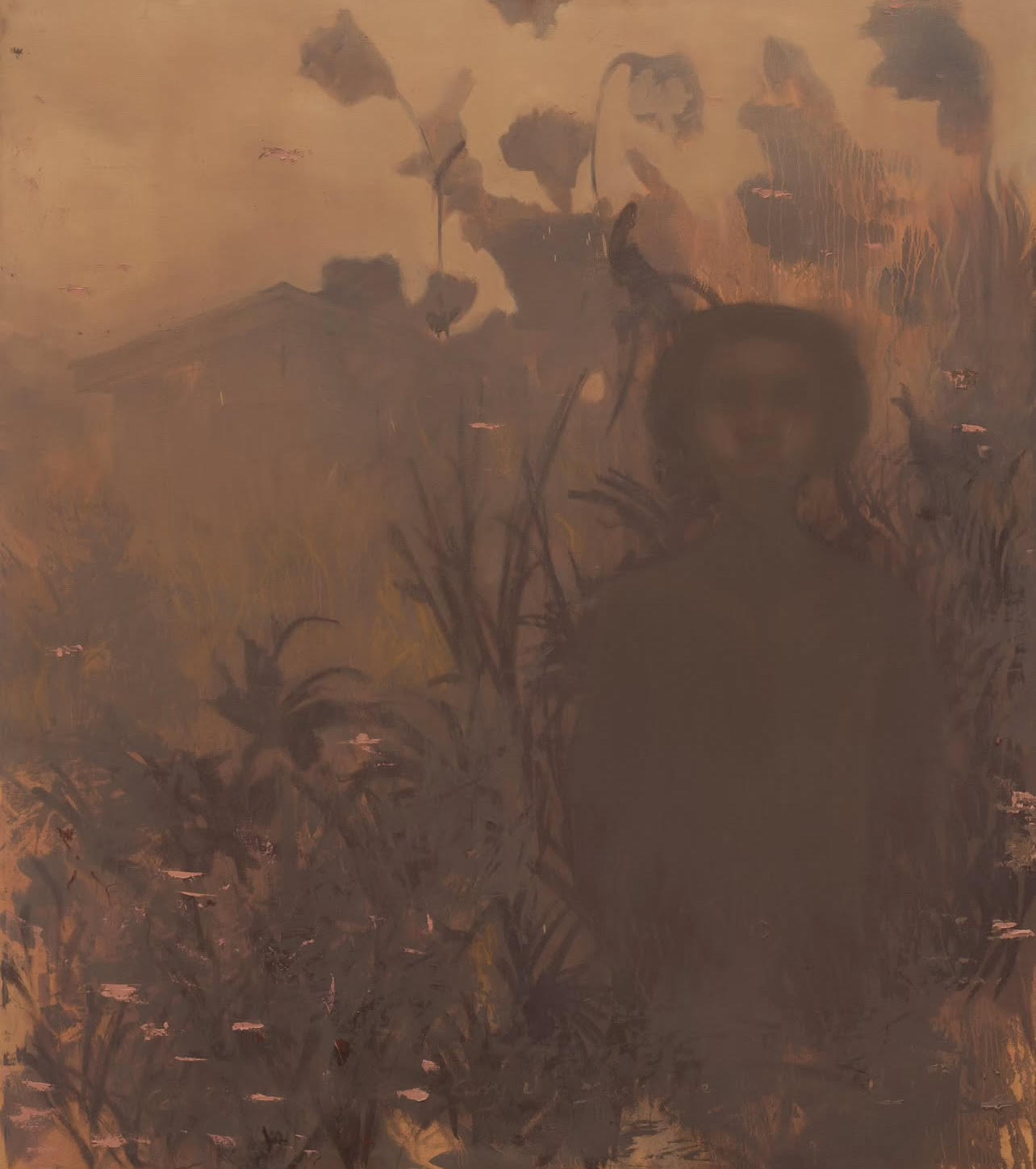
Do This In Memory of Me: Chidinma Nnoli at Retro Africa
Booth 422
Chidinma Nnoli’s Do This In Memory of Me resembles a half-forgotten dream, or perhaps a fading memory you are desperately trying to recall. In the same way that we suddenly remember fragments of last night’s dream or a fond childhood memory as we try to recount them, Nnoli’s paintings reveal layers upon layers of hidden details the longer we look. Her hazy and impressionistic style conceals an intensity that entices viewers to unravel the mysteries within each painting. Nnoli’s solitary female figures almost emerge from the canvas, resisting absorption into the rest of the composition. The words “can’t cry” and “just have to” appear like faint whispers amongst the foliage, and a lonely building in the distance is nondescript save for the cross hanging above its entrance. With a restrained color palette and exquisite technique, Nnoli is able to depict the tension between religious and gendered obligations, fate and free will, and the past versus the present. She does not offer a definitive answer to the question of how each of us must balance these opposing forces within our own lived experiences, but perhaps it is enough that amid the general chaos and noise of the Armory Show, Chidinma Nnoli’s art offers a much-needed moment of quiet contemplation and spiritual reflection.
-Colleen Dalusong
THE GALLERY CIRCUIT
Loco-Motion: Daniel Giordano & Ruby Perkins Kooky and Tender Memories in Motion
Picture Theory, September 4 – September 6, 2025
Amidst the humdrum of the Armory—men in tailored suits pacing on cell phones, deals struck with the same tired choreography—Memories in Motion offers reprieve. Tucked into an offsite venue a few blocks south, the show inaugurates Picture Theory’s first residency program, managed by curator Danielle Paterson, and features Daniel Giordano and Ruby Perkins. Their works dwell on objects that persist, suggesting memory is less a fixed archive than an active practice.
If the Armory prides itself on spectacle and scale, Memories in Motion thrives in contrast: an intimate reflection on family histories and the thin line between chaos and calm. The crowd too felt different—working artists, peers, community figures who exist adjacent to the market’s spotlight but not centered in it. This is a show more concerned with how memory moves, spasms, and slips than with novelty for its own sake.
Perkins cultivates a quiet intensity. In Three Beans and a Bullet (2024), a palm pierced by a bullet glows with fiery red: intimate yet inviting, interlocking pain with tenderness. In Past Projections and Palm Prophecies (2025), a disjointed body emerges from warm hues, its gaps revealing the selective, capricious nature of memory. These works don’t mask fragmentation; they inhabit it.
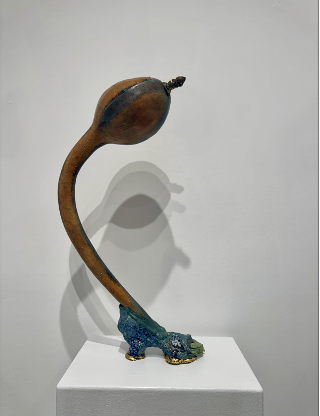
Giordano, by contrast, embraces tactility and whimsy. Pump IV (2022–2023), a bulbous form balanced on a heeled base, seduces with awkward elegance. His constructions feel measured but never over-calculated. Pleasure Pipe LXXIX (Revisited) (2022–2023), fashioned with a goatskin cock ring, lands an understated climax: boisterous, nonsensical, evocative enough to make viewers blush, veering into the carnivalesque and keeping the tone buoyant.
Placed side by side, Perkins’s intimacy and Giordano’s tactility shouldn’t work—but they do. Their disjuncture feels like memory itself: uneven, jagged, tender, absurd.
-Vinh Phu Pham


Of Two: Naotaka Hiro at Bortolami
September 5 – October 31, 2025
This show was incredible. Wood panels, canvas, grommets, rope, colorful oil paint, and metal mingled in various intuitive and vibrant constellations in Naotaka Hiro’s solo show Of Two at Bortolami. I didn’t quite understand what I was seeing—understandable, as the press release consists of fourteen pages, eleven of which are notes from the artist describing his process in hand-drawn diagrams and in text. He maintains constant contact with his canvas, mark-making with his body, without seeing what he is doing, methodically for set durations color color-coding different types of movement. His bronze works are self-life-cast, beginning with applying silicone to parts of his body that he can reach. And, so on. He used to make film, and when he was sick with COVID, he spoke to his body parts for fifteen minutes at a time. The complexity and deep-seated methodology of his process and his bodily awareness is both welcoming and alienating at the same time; the works are felt but hard to describe.
-Anna Mikaela Ekstrand
COLLECTIBLE NYC
In its second New York edition, the Belgian Collectible Design fair expands with more international exhibitors and a more booth-centric layout. Partnering again with Water Street Projects (WSA), the fair inaugurated many visitors first excursion to their second office tower at 180 Maiden Lane; just two blocks farther south towards the East River. The 39th floor is an octagonal warren of 123 adventurous and art-heavy design presentations with impactful mise-en-scène. Booths of note include the Colombian magazine EXCLAMA showcasing a range of natural fiber wall hangings by Rosana Escobar and Agustin Nicolas Rivero: energetically stopping people mid-stride to investigate further. Female-founded HOMA from Turkey fuses expertly mirrored benches and shelves overlaid with a whiplash curve of two intertwining precision-cut marbles for Tuğba Koç’s Orbis Collection, an undeniable feat of expert craftsmanship.

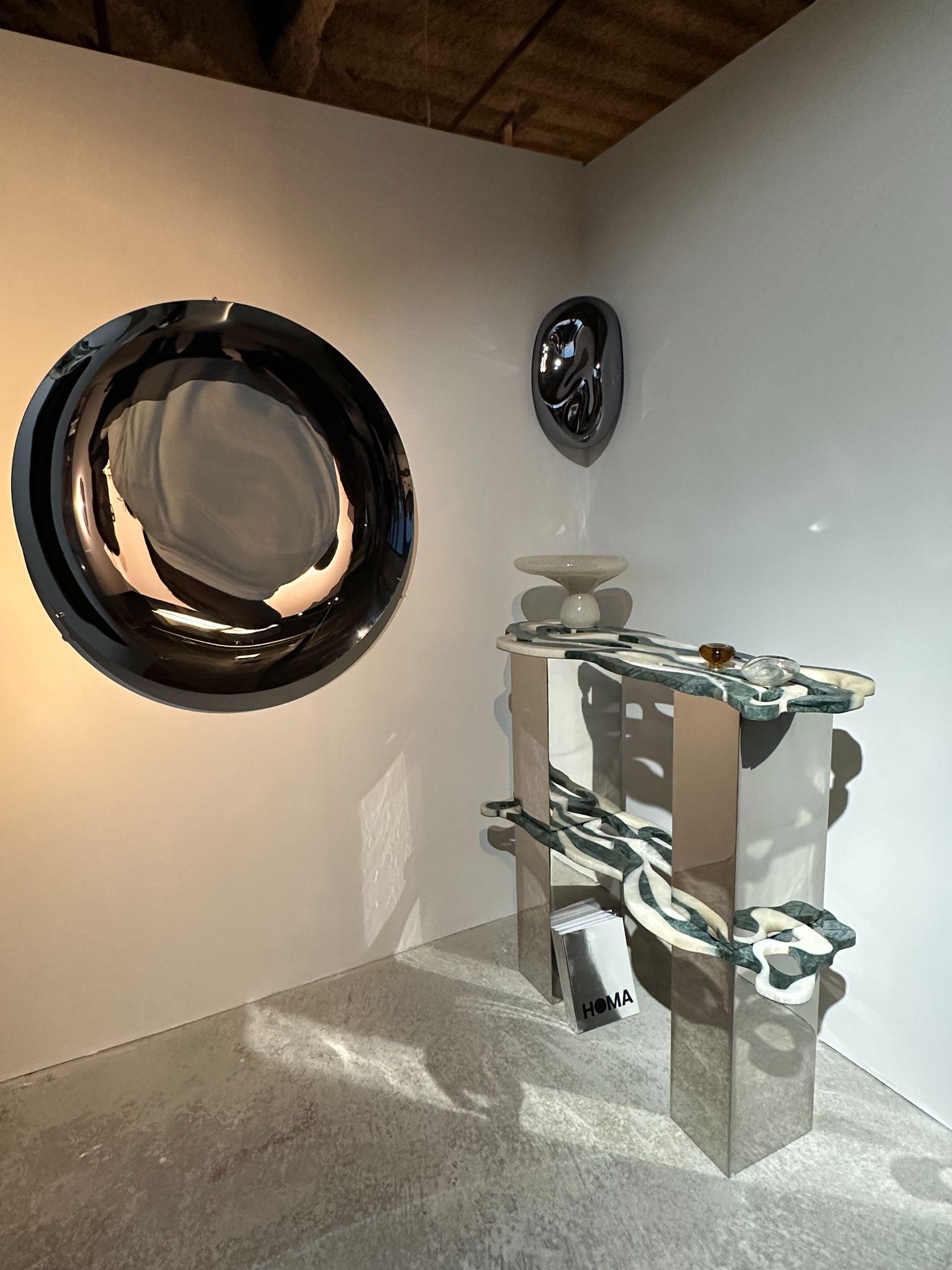
The Mexican German duo behind New York’s Atelier Ollin, Noel Hernandez & Viktoria Barbo, bring sophistication and practicality through the thoughtful details of their modern rituals console. Drawing equally on ancient myth and innate materiality, these volcanic basalt designs are architectonic—yet modular—with tapered multi-step bevels equally harkening back to Museo Anahuacalli in Mexico City and the angular American Art Deco vernacular of New York City. Collectible situates contemporary design and artistic sculptural practices as bedfellows, yet WSA brings them in full purview of the fashion cohort. As these disparate worlds continue to consolidate for entrepreneurial safety, this fair may continue to grow its profile as an ecosystem epicenter for a fully zillennial-approved scene staple. And, in the same building, hats off to the organizing duo, Kyle DeWoody and Zoe Lukov of Duet, who kept their new curatorially driven fair tight by inviting galleries to present artworks in dialogue: Marina Abramović, Laurent Grasso, and Sam Moyer at Sean Kelly Gallery captivated.
-Carson Woś
Uhaul
Where do Chuck, Hexton, and Indiana meet? At the Uhaul Art Fair. A first for the Chelsea scene, this inaugural edition’s platoon of cavalcade of 12 rental trucks lined 22nd Street from Sikkema Malloy Jenkins past Dia Chelsea. Works priced from $200 to $8K are found at this fair that is fueled by generators, varying scales of counter-cultural antics, stoop-life mentality, heaps of purported illegality, and the most important ingredient of all: young dealers. Exhibitors hail from as far as L.A., and as close as TriBeCa and Ridgewood.
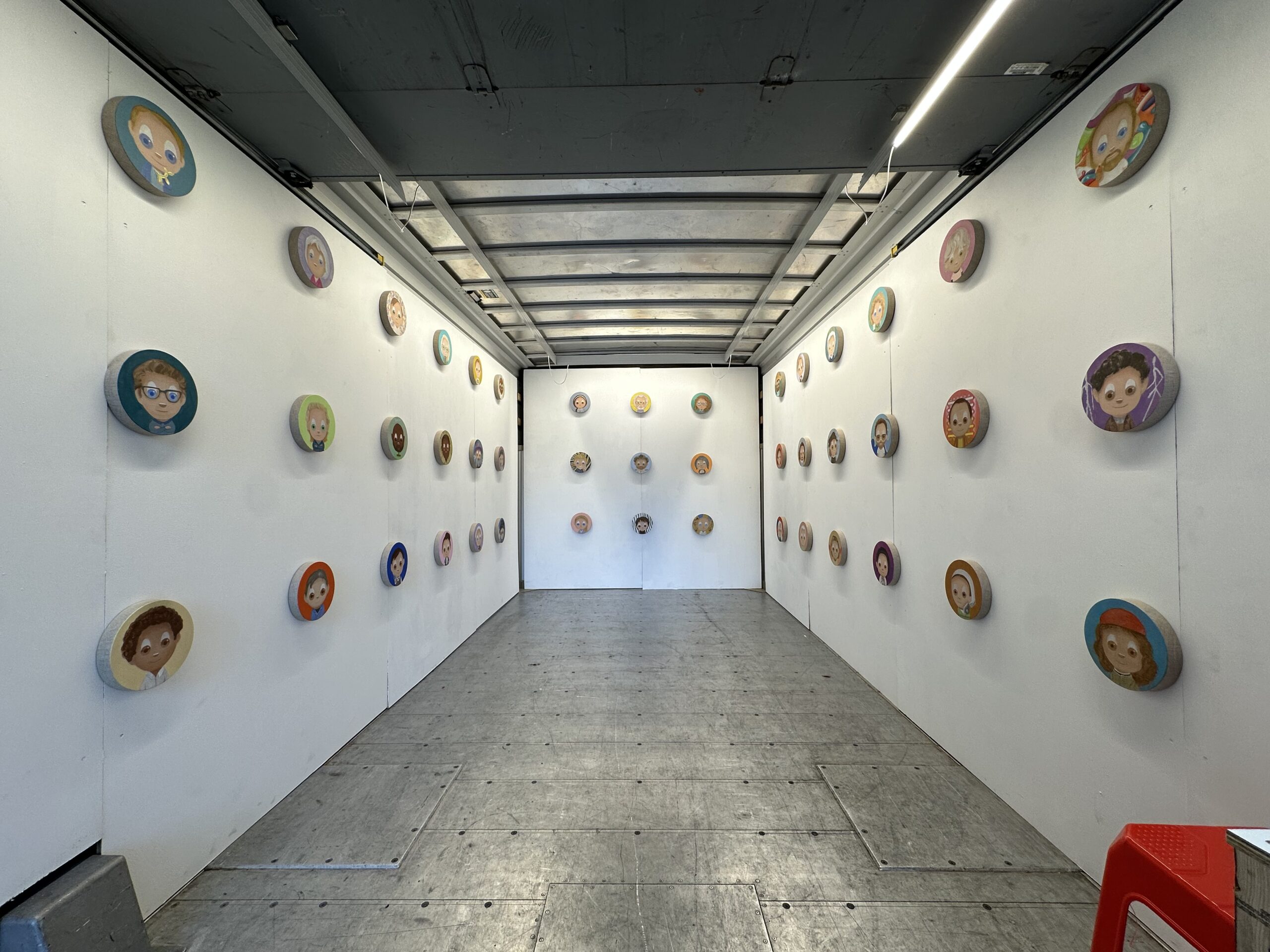
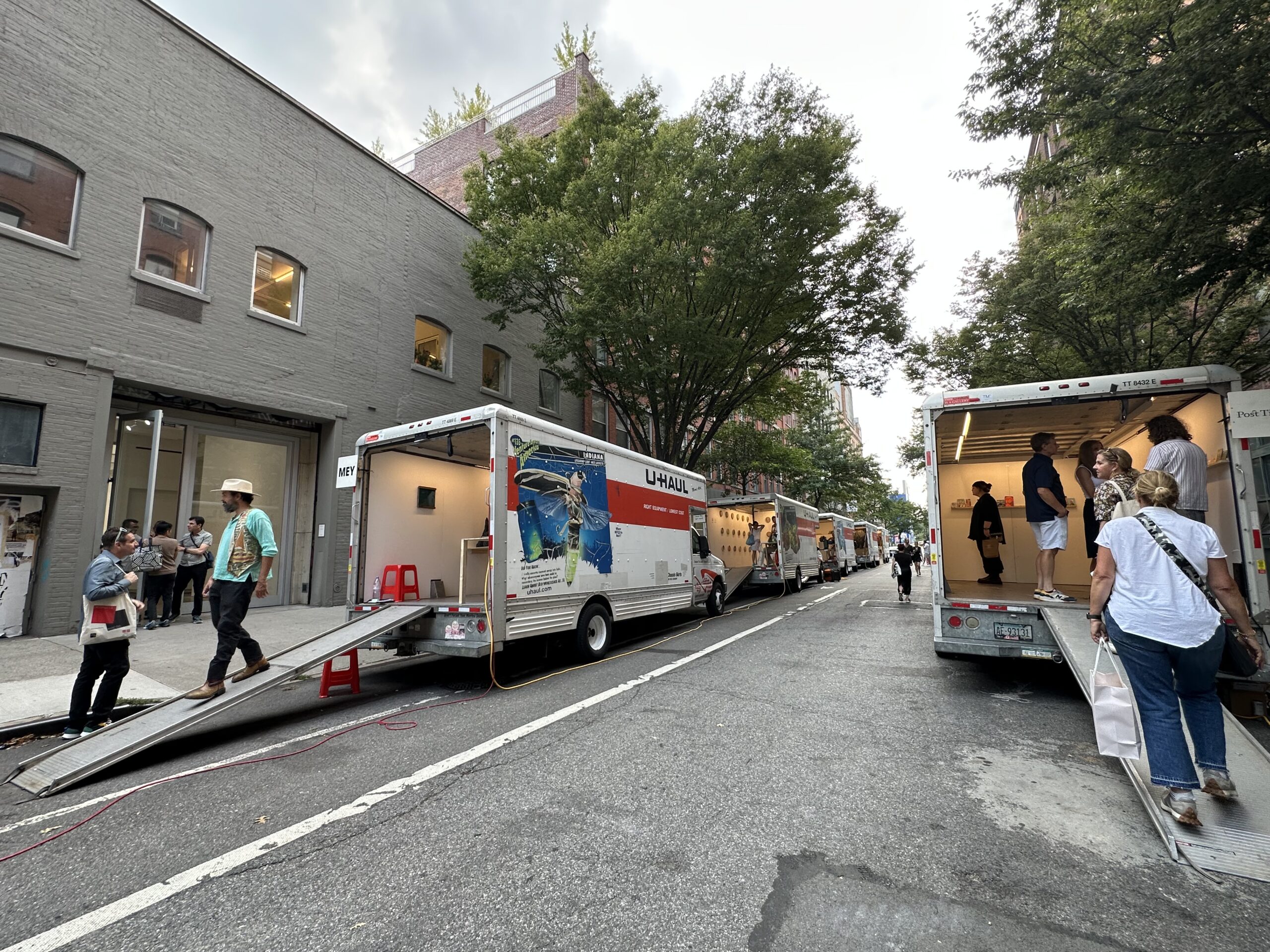
Highlights include the irreverence of Post-Times gallery, Minnesota local legend artists collaboration of Bruce Tapola and Melba Price drawings. Asher Liftin’s laboriously hand-painted CMYK dots out of register for the Magritte-inspired monumental glass of water is unintentionally ironic in its heroic display on a sweltering air condition-less street-side jaunt. A serial repetition of small round canvases lined the Hug From The Art World’s solo presentation of Korean artist SOCKO, who is simultaneously exhibiting at KIAF. Kawaii-inflected Nara-esque portraits of canonical and blue-chip artists are the subject of these petite roundels from Courbet—not to be confused with Johnny Deep—through to Annie Leibowitz. Can you find your all-time favorite? They are also taking commissions for additional portraits to join this ongoing series. While Nino Meier’s team utilizes the ‘third space’ between their Armory presentation and downtown HQ with daily rotating inventory as enticing solo painting presentations.
Distinctly an alternative format pivoting the traditional art fair as a sustainable financial blueprint that supports galleries, the original Uhaul Gallery team produces the entire infrastructure. From truck rentals, to temporary drywall retrofit of the interiors, exhibitors merely arrived and installed as with any other international fair model. The model offers a much more manageable break-even threshold than traditional fairs, with a handful of gallerists reaching that goal within the first two days.
While the emerging gallery scene is no stranger to micro galleries, nomadic exhibition programs, and collaborative models, this seems to be the first time they are brought to bare together for a fair format. Don’t be fooled by it’s guerilla marketing and DIY college campus vibes, the majority of attendees are art world fluent and works are changing hands. Make no mistake this is not a flash-in-the-pan Gen Z Instagram experience, it is an earnest attempt to counter the narrative of gallery closures and overpriced fairs with a tangible entrepreneurial alternative for the next generation of Millennial dealers to keep the sector afloat for years to come.
-Carson Woś
OPENING THE FALL MUSEUM ART SEASON
An Infusion of New Life as Yukhnovich Reimagines the Four Seasons at the Frick
Four Seasons on view September 3, 2025-through March 9, 2026
Flora Yukhnovich, like many artists before her, is drawn to the enduring phenomenon of the seasons, those rhythms of change that echo through both art and life. At the Frick, François Boucher’s radiant depictions of the seasons offer a perfect counterpoint: lush, playful, and exquisitely detailed celebrations of nature’s cycles. It is easy for the viewer to move between Boucher’s vision and Yukhnovich’s, yet there is no need for direct comparison. In that way both artists retain their unique voices. What emerges instead is a dialogue across centuries. Yukhnovich ventures beyond the decorative charm of Rococo. Her imagination takes flight, translating those themes into a language of her own—fluid, gestural, and alive with movement. She walks a sensitive line between representation and abstraction, where forms dissolve and reassemble in a dance that feels at once familiar and utterly new.
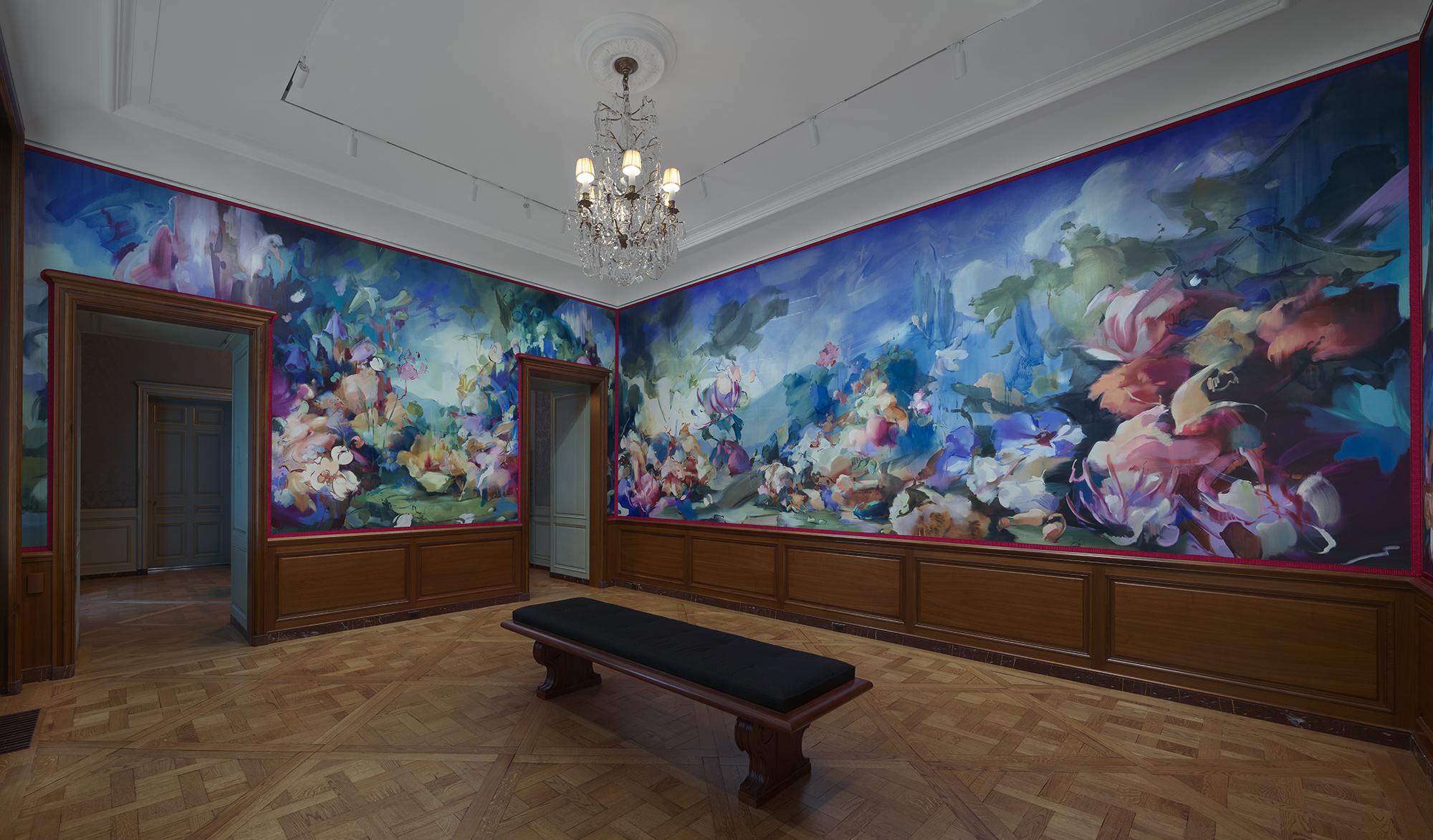
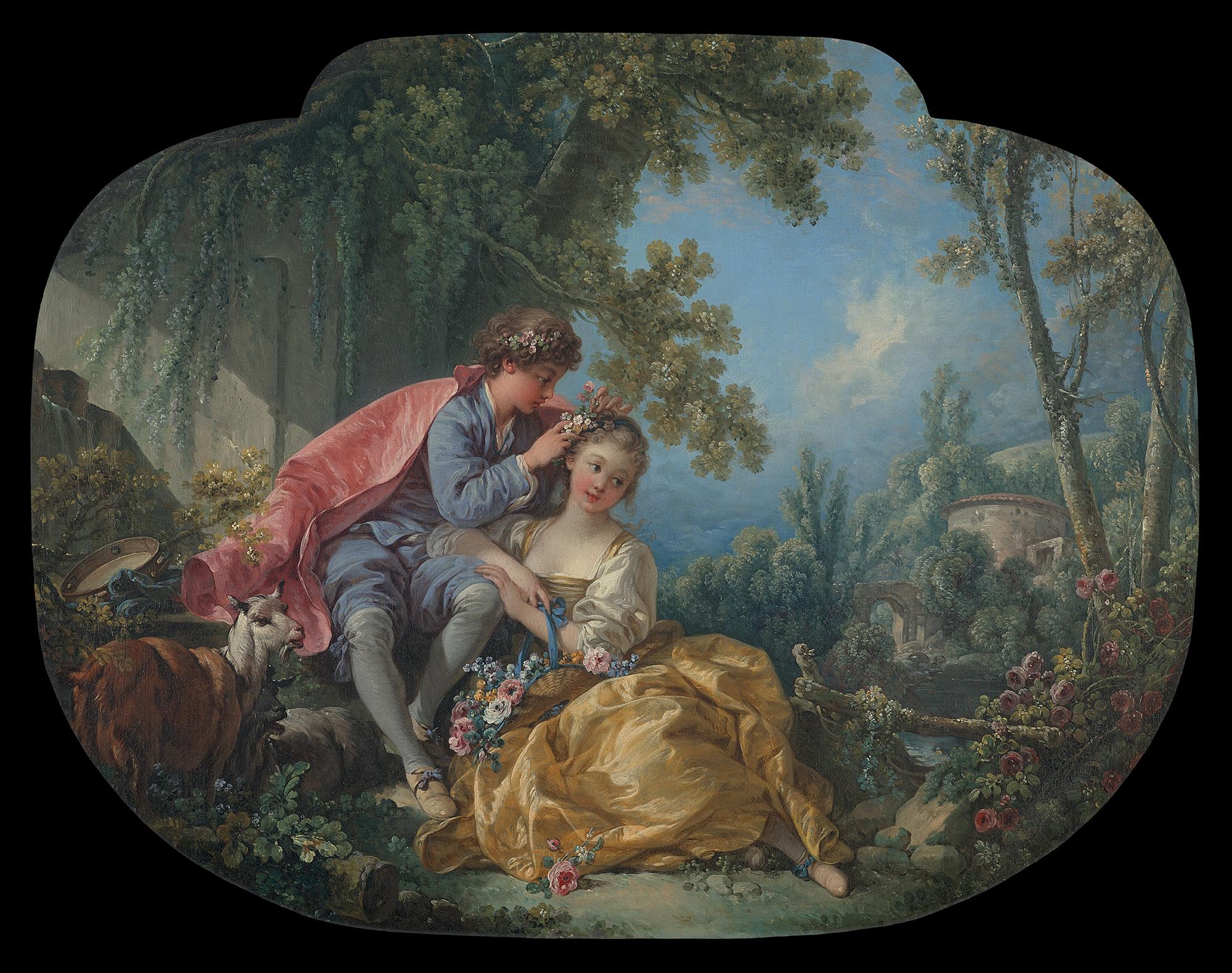
Yukhnovich’s commission is based on conversations with curator Xavier Salomon that took place over several studio visits. Although The Frick is a long-held sanctuary for the Old Masters—“[They] are still part of people’s lives that come to The Frick to be inspired,” commented the director of the historic house—we should not forget that when Henry Clay Frick started collecting his focus was on contemporary art, the Barbizon School artists who were alive.
In this interplay between old and new, the newly revitalized setting of the Frick Collection reminds us that art is not static. It evolves, transforms, and reawakens with each generation of makers and viewers. Yukhnovich’s seasons do not merely echo Boucher; they expand the conversation, offering a vision where memory and invention coexist, where history and imagination entwine.
-Tsipi Ben Haim

